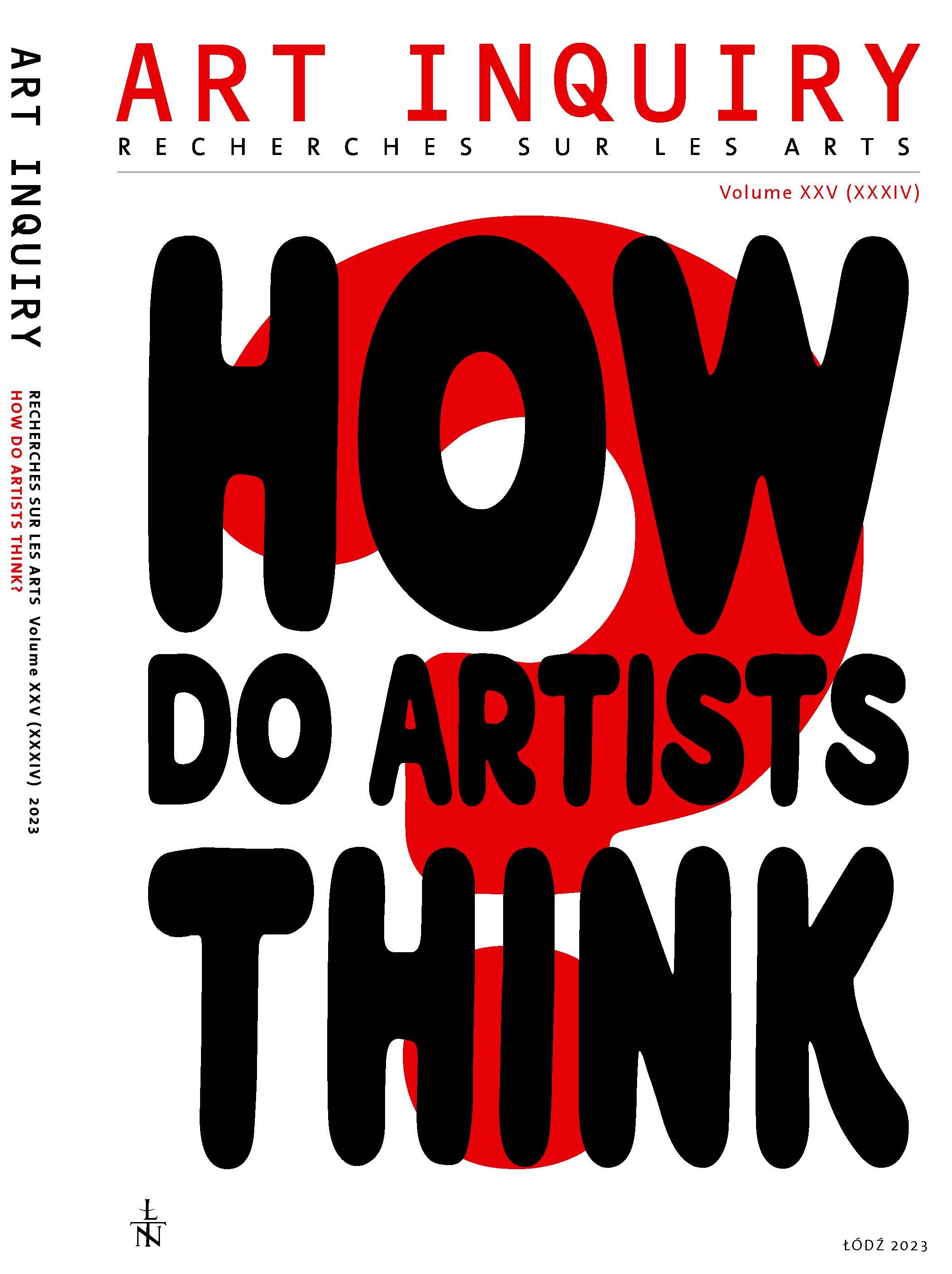Paranoia-criticism as a surrealist variant of artistic thinking
DOI:
https://doi.org/10.26485/AI/2023/25/7Keywords:
Surrealism, Paranoia-Criticism, Simulacrum, Aspect Perception, Dalí, Breton, Lacan, WittgensteinAbstract
While in the 1920s surrealism was dominated by the notion of mental automatism and hysteria, in the 1930s surrealist experimentation was mainly concentrated on the notion of paranoia. Introduced by Salvador Dalí in his L'Âne pourri ("Le Surréalisme au service de la Révolution", 1930 No. 1), it was intended to expose normative understanding of perception inadequate to experience. The primary tool used by Dalí was an optically ambiguous image which could be interpreted in different ways. André Breton wrote about critical paranoia in L'Amour fou (1937), referring to Freud's text on Leonardo da Vinci. In Anthologie de l'humour noir, he defined it as "the détournement of the logical function in its usual modes of operation". The notion of paranoiacriticism helps to accentuate a crucial role of such perceptual states and concepts describing cognition as inconclusiveness and polysemy. To a large extent, they mark the boundaries between linguistic and visual articulation. Paranoia seems to be a concept very far from the twentieth-century model of scientific thinking, but if we refer to Wittgenstein's Logical--Philosophical Treatise, we can see that his concept of aspectperception is not far from a surrealist definition of paranoiacriticism.
References
Ades Dawn (2019) Salvador Dalí [in:] The International Encyclopedia of Surrealism, M. Richardson, D. Ades, K. Fijalkowski, S. Harris, G. Sebbag eds., vol. 2, London, New York, Oxford: Bloomsbury, pp. 197-200.
Ades Dawn (2022) Salvador Dalí, London: Thames & Hudson.
Anthology of Black Humour (2009) A. Breton ed., transl. M. Polizzotti, London: Telegram.
Bogousslavsky Julien, Haan Joost, Koehler Peter J. (2013) Un passant chez Babinski: André Breton en chemin vers le surréalisme, "Histoires littéraires" Dossier André Breton, vol. 19, no. 53, pp. 91-104.
Breton André, Éluard Paul (1930) Introduction, [in:] S. Dalí, La Femme visible, Paris: Éditions Surréalistes.
Breton André, Éluard Paul (1930) Immaculée Conception, Paris: Éditions Surréalistes.
Breton André (1987 [1937]) Mad Love, transl. M. A. Caws, Lincoln and London: University of Nebraska Press.
Constantinidou Despina-Alexandra (2012) When Lacan Met Dali: Lacan's "Paranoid" Reading of Saussure’s Theory of the Sign, "Gramma: Journal of Theory and Criticism", vol. 20, pp. 237- -255.
Dalí Salvador (1930) L’Âne pourri, "Le Surréalisme au service de la Révolution" no. 1.
Dalí Salvador (1998) Oui: The Paranoid-Critical Revolution Writings, 1927-1933, R. Descharnes ed., transl. Y. Shafir, Boston: Exact Change.
Dalí Salvador (1998) The Collected Writings of Salvador Dalí, ed. and tranls. H. Finkelstein, Cambridge: Cambridge University Press.
Esman Aaron H. (2011) Psychoanalysis and Surrealism. André Breton and Sigmund Freud, "Journal of the American Psychoanalysis Association", no. 59, pp. 173-181.
Freud Sigmund (1981) Psychoanalytic Notes on an Autobiographical Account of a Case of Paranoia (Dementia Paranoides), [in:] idem, Case Histories II: "Rat Man", Schreber, "Wolf Man", Female Homosexuality, J. Strachey, A. Richardson eds., transl. J. Strachey, Harmondsworth, Middlesex, England: Penguin, pp. 129-223.
Richardson Michael, Black Humour, [in:] Surrealism. Key Concepts, Krzysztof Fijalkowski, Michael Richardson eds, Routledge, London-New York 2016, pp. 207-216.
Sérieux Paul, Capgras Joseph (1909) Les folies raisonnantes: Le délire d’interprétation, Paris: Félix Alcan.
Wittgenstein Ludwig (2009) Philosophical Investigations, transl. G. E. M. Anscombe, P. M. S. Hacker and J. Schulte, Chichester: John Wiley Blackwell.
Downloads
Published
Issue
Section
License

This work is licensed under a Creative Commons Attribution-NonCommercial-NoDerivatives 4.0 International License.



